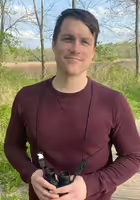Episode 53: Chestnut-Sided Warbler – Voice of the Wild
Chestnut-sided warbler (Setophaga pensylvanica).
A colorful warbler that’s “pleased to meet you.”
Do you want to learn more bird songs, frog calls, and insect noises? Join Voice of the Wild every...

